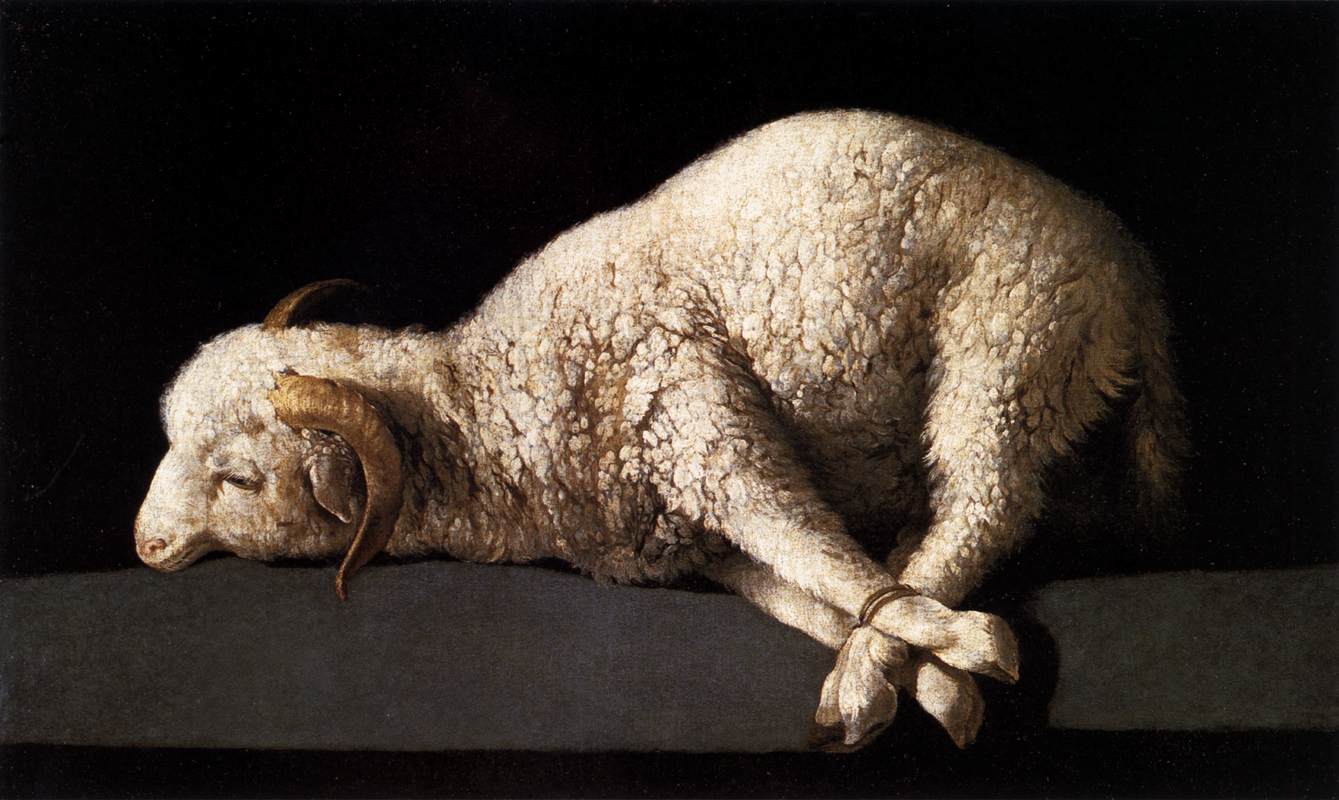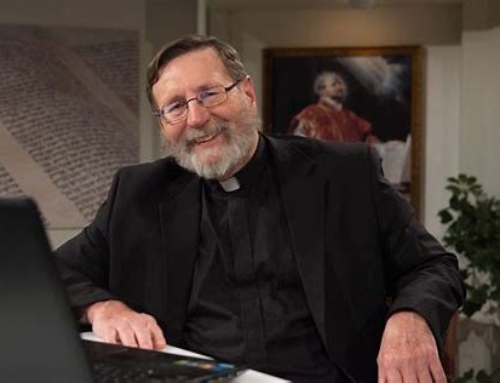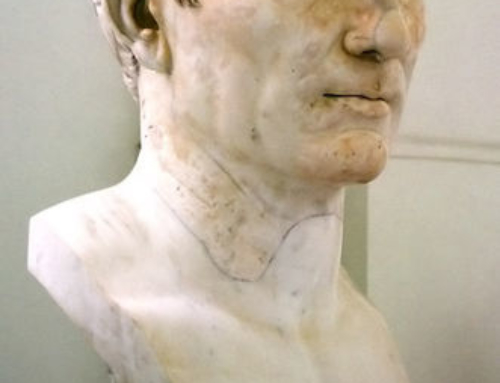Over at the Suburban Hermit part of the blog there is another full chapter of my book St Benedict and St Therese – The Little Rule and the Little Way. This is part three of a weekly Benedictine Retreat online. This section is reserved for Donor Subscribers, but an excerpt from the chapter is published here for all readers. If you are a Donor Subscriber go here for the full chapter. If you would like to learn more about being a Donor Subscriber go here.
The Way of the Lamb
William Blake asked, ‘Little lamb, who made thee?… Little lamb, I’ll tell thee, He is called by thy name, For he calls himself a Lamb. He is meek, and he is mild; He became a little child.’ Authentic poets are also prophets; as Elijah sat under a tree and was fed by angels, Blake sat in a tree and saw angels. Like the second Elijah– John the Baptist, Blake points his finger toward the Lamb of God.
One who points his finger is pointing the way, so when Blake points us to the Lamb he also tells us to follow the Lamb. Jesus tells the story of the Good Shepherd, but as the priest is also the victim, so the Shepherd of God is also the Lamb of God. As a result, those who follow the Good Shepherd also follow the Lamb. Indeed, the book of Revelation proclaims this paradox when it says the martyrs are ‘those who have followed the Lamb, and the Lamb at the centre of the throne will be their Shepherd.’
The Lamb ‘became a little child’, and if we want to follow him we must become as little children. Benedict called his rule a ‘little rule’ and a little rule is for little people. Children are little people, and it is no co-incidence that Benedict calls his monks ‘sons’. The opening words of his rule are, ‘Listen my son…turn the ear of your heart to the advice of a loving father.’ If his disciples are sons, then they are children. Many observers have commented on the extraordinary youthfulness of monks and nuns, but their child-like quality is never an embarrassing immaturity. An ageing monk who is youthful is not at all like an ageing executive who combs his hair over, wears jeans and drives a sports car. Benedict’s children are not a band of lost boys who never grow up; but adopted sons who have found a Father. The Peter Pans of this world are perpetually immature, Benedict’s sons are perpetually innocent. Peter Pan’s wish to never grow up is a fairy tale of twisted desire with a hook in the end. Benedict’s sons follow another Peter—one who was so childlike that he stepped out of his boat to walk on the raging sea to meet the captain of his soul.
Because Benedict writes as a father to his children, his ‘little rule’ can be seen as a way of spiritual childhood. The ‘little way’ which is implicit in Benedict’s rule shines clearly in Thérèse. She writes, ‘The Little Way is the way of spiritual childhood, the way of trust and total surrender. To remain little means recognising one’s nothingness.’ Elsewhere she wrote, ‘He wishes me to surrender myself like a little child and not concern myself over what is to happen to me.’
John Saward explains Thérèse’s ‘little way of spiritual childhood’:
First, let us make clear what it is not. It is not childishness, the refusal
to grow up, that psychological heresy which Chesterton dubbed ‘Peter Pantheism.’ In the early hours of Christmas Day 1886 Thérèse was given what she called the ‘grace of my complete conversion’ which was at the same time, the ‘grace of leaving my childhood.’ One might say she gave up one childhood for another: she left behind natural childhood, which is but a passing state, in order to make more intensely her own the supernatural childhood of her Baptism…Here is the paradox of the Gospel. It is only when we convert and become like little children that we reach our Christian maturity.
‘Ah,’ we say, ‘the little way of the Lamb is indeed a beautiful idea, and doubtless it is the way some are called to.’ But with the gospel, Thérèse insists that this not a way, but the way. To follow the lamb and become a child is not an option; it is a command. ‘Unless you become as a child,’ says the gospel, ‘you cannot enter the kingdom.’ ‘No grown ups allowed’ reads the sign over the door into paradise. Pearls are tiny, and so are the pearly gates. When Jesus said the way was narrow perhaps he meant it was too narrow for grownups to squeeze through. The grownups are camels—hairy, lumpy, over-burdened, bad-tempered brutes– who can never get through that eye of a needle which is the little door of heaven.
To become like a child is to share in the mystery of Bethlehem, where the creator himself became a child. As Saward puts it, ‘the Son came from the Father by the Little Way, as a child, and by the Little Way, as children, we are led by Him to the Father.’ It is no mistake that Thérèse is called, Sister Thérèse of the Child Jesus, for her life and teaching is a vivid reminder that in becoming a child, Christ fulfilled his own precept that ‘unless you become a child you cannot enter the kingdom.’ Saward sums it up, ‘By becoming the child of the Virgin, the eternal son of the Father raises all natural childhood to a new and wonderful dignity and opens up for us the way of spiritual childhood, as adopted children of God.’
Go here to purchase St Benedict and St Therese-The Little Rule and the Little Way. Go here for the full chapter.







Leave A Comment
You must be logged in to post a comment.